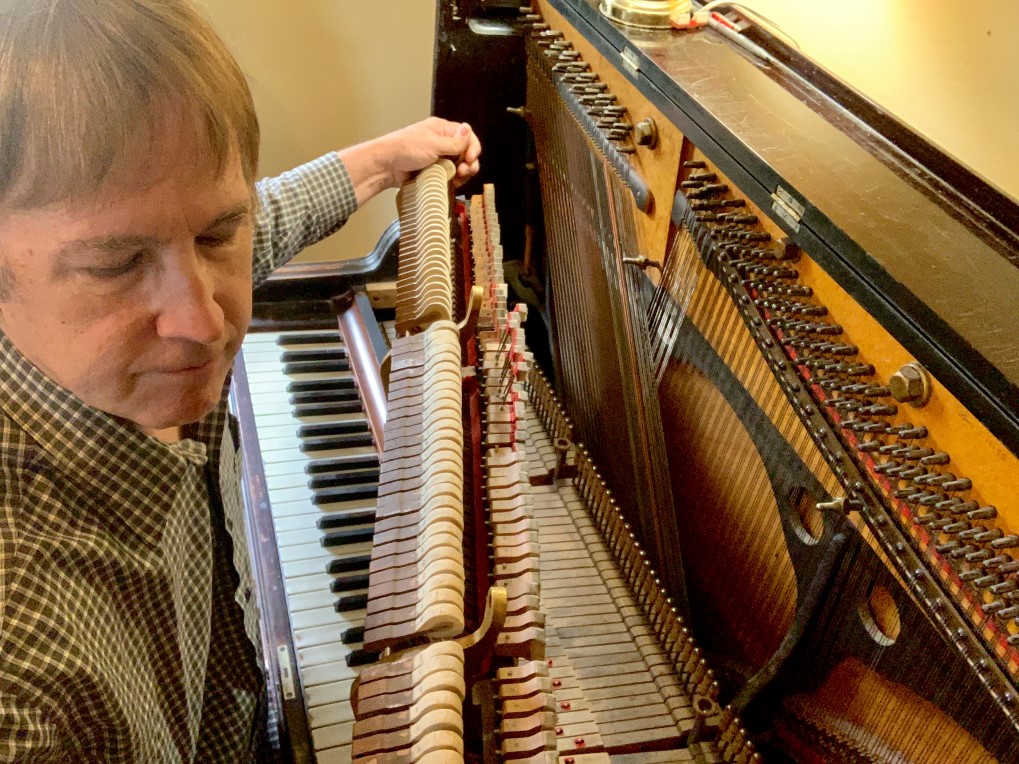
Whatever your piano, and however skilled (or unskilled!) the hands that play it, don’t you want it to sound its very best? Let Suits Piano Service make that happen for you.
Tuning a piano sounds simple, but it’s not. Owing to the stiffness of the strings and a phenomenon called inharmonicity, tuning a piano necessarily involves compromises. The most accomplished tuners are those that can zero in on the compromises that work the best on each individual piano.
On top of that, acquiring the skill to put a note where it belongs in such a way that it stays there, not slipping after a day or a week, takes a lot of practice – just like learning to play the instrument.


Many common repairs can be done on-site, right in your home. These include stuck keys, annoying squeaks, and broken strings, to name a few. On the other hand, some may require removing the piano action and working on it in the shop.
For any recommended repairs, you can count on a reliable estimate and prompt action from Suits Piano Service.
